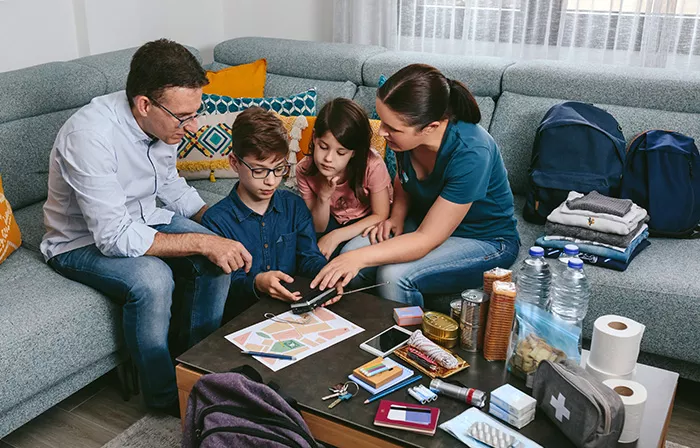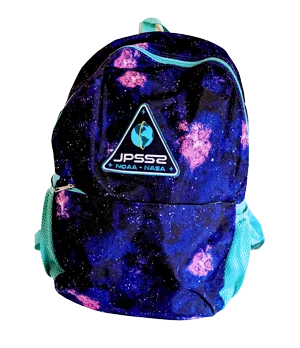
Data from NOAA’s JPSS satellites help us monitor extreme weather and plan for it in advance. This activity introduces children to the concept of creating a household emergency plan.

Lesson Plan
Data from NOAA’s JPSS satellites help us monitor extreme weather and plan for it in advance. When protecting lives and property from severe weather, time is of the essence. The JPSS series of satellites give us earlier and more targeted warnings of devastating weather events like floods, hurricanes, snow and ice storms and wildfires. These warnings can help with evacuations and emergency preparations.
For example, JPSS measurements allowed forecasters to give advanced warning of Hurricane Ida, which made landfall in Louisiana in August 2021 as a Category 4 storm. These kinds of advance warnings give people time to prepare their homes for a storm and evacuate.
Using satellites to forecast the weather isn’t the only thing that we can do to be prepared. It is a good idea to create a family emergency plan and keep a bag of supplies ready in case you must leave your home in a hurry. This activity introduces children to the concept of creating an emergency plan.
Materials
- A backpack, bag, or box
- Various emergency supplies
- Shelf stable food
- Water
- Household items or toys that are not helpful to have in an emergency
Discussing Emergency Preparedness
- Think about the age of your learners and how to discuss introduce concepts of severe weather, natural disasters and fires.Visit https://blog.response.restoration.noaa.gov/growing-prepared-power-youth-preparedness and https://www.ready.gov/kids to learn more about how to explore these topics.
- After introducing the concept of emergency preparedness to your students go through the items you’ve collected one by one and ask them if they should be added to the Emergency Kit. Help them understand that they may not have access to power, food, water, or shelter. Keep in mind that there’s no wrong answers and if they choose one of the non-essential items you’ve supplied, ask follow up questions to determine why they thought it might be valuable. For example, they might say a toy would be good for morale, or a book would be a way to prevent being bored. Keep an open mind and encourage a lively discussion.
- Ask students to write out a list of things they think would be useful in a home Emergency Kit.
- Challenge the students to discuss with their household and create a kit at home.